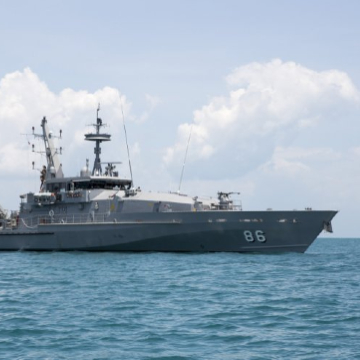
Engineering, safety and seaworthiness assessment services for multiple Royal Australian Navy platforms.
Noventus Role
The Client required a diversified engineering and logistics professional services firm to assist with various initiatives related to the Royal Australian Navy (RAN) Fleet Regulatory Review Implementation.
At the time, the Client had an increased need for Subject Matter Expertise on various RAN platforms from a trusted engineering governance advisory services partner.
Accordingly, the Client engaged Noventus to provide engineering services, which included inter alia FMEA/RCM/MCAs, for the RAN FFG, Amphibious & Afloat, Hydrographic Vessel, LHD, and Mine Hunter platforms.
In particular, for the Armidale Class Patrol Boats (ACPB), Noventus provided Safety and Engineering Governance / Seaworthiness Assessments / Materiel Conditions Assessments (MCA).
Business Need
The objective of the RAN MCA process is to assess whether the item under assessment provides the minimum required functional performance (confirm Fitness for Service) and determine whether the risks of the item under assessment are in excess of the level ordinarily tolerated when the item’s physical condition meets Navy requirements.
As a result, the MCA process is one of the processes used to provide assurance on the technical integrity of the platform under assessment.
A recent review on the efficacy of the MCA process at Surface Force Command (SURFOR) identified a number of deficiencies within the MCA process and the MCA procedures in meeting objectives.
As a result, SURFOR inherited a risk in assessing seaworthiness of a number of RAN platforms including the ACPBs.
Noventus Solution
Safety and Engineering Governance
Noventus provided the Patrol Boat Group (PBGRP) with the following outcomes:
- Functional analysis of the Engineering activities within PBGRP AND A corresponding report detailing functional requirements, deliverables, skill sets and personnel requirements
- Review of Technical Departmental Management Audit (DMA) activities IAW AFTP1(C) 302, including:
o Coordination and conduct of DMAs, and
o Group wide DMA analysis
- Development of schedules and support of harbour and sea trials
- Hand over / take over (HOTO) audits
- Review of Maintenance processes, including:
o Organic and external planned maintenance processes
o Defect and corrective maintenance processes
o Defect reporting and trending
o Planned maintenance procedure quality control processes
o Planned maintenance procedure accuracy snapshot
o Planned maintenance performance to achieve total cost effectiveness (e.g. RCM analysis), and
o Planned Maintenance schedule verification, validation and review - Review of Configuration Management processes, including an audit of PBSPO CM policy / procedures.
Seaworthiness Assessments
Noventus reviewed and amended the ACPB Assessments of Seaworthy Materiel (ASwM)s procedures to assure their ability to meet the required objectives.
Noventus aligned the procedures to material condition inspections and set to work (STW) activities.
They referenced applicable operational standards (e.g. EOSS), and contained objective and system specific ‘check off’ steps, and permitted the recording of measurable data that could be used for trending purposes.
The task also required the validation of each ASwM procedure to assure content accuracy and completeness.

